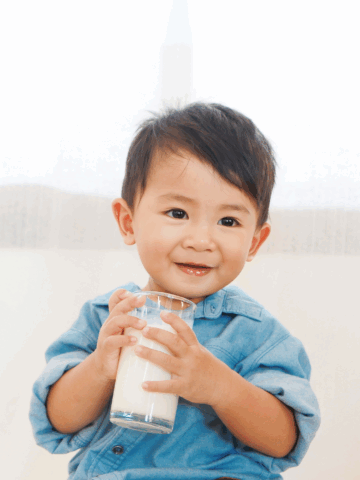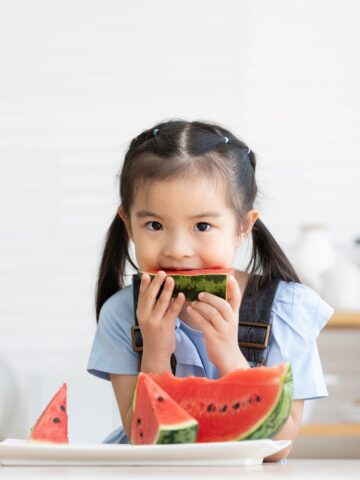In recognition of National Eosinophil Awareness Week, coming up May 13-19, Shonda Brown, RD, CNSC, clinical dietitian at CHOC Children’s, explains what Eosinophilic Esophagitis is, and how this unique condition is treated.
Imagine having abdominal pain so severe you are taken to the emergency department in fear of yourself having a heart attack, or unable to eat a meal without thinking if you are going to get food stuck in your throat. These are a few things I have heard from patients to describe their symptoms of Eosinophilic Esophagitis (EoE). EoE is characterized by eosinophil (a type of white blood cell) accumulation in the esophageal lining creating inflammation and a variety of adverse symptoms. Some common symptoms are vomiting, abdominal pain, reflux-like symptoms, poor weight gain, trouble swallowing and food impaction (when food gets stuck in the throat).
Currently, the only way to make a diagnosis is by endoscopy with biopsies of the tissue lining the esophagus. A small tube with a camera at the tip is inserted through the mouth and down through the GI tract. The doctor looks for any signs of inflammation as well as takes small tissue samples to be examined with a microscope.
Research has shown that food allergies are the most common cause of EoE. Once a diagnosis is confirmed, children are referred to an allergist for allergy testing to guide treatment. Treatment options include food elimination diets, specialized formulas, and/or medication therapy (usually swallowed steroids from an inhaler). A directed elimination diet is one dietary treatment approach that includes food avoidance of those showing a positive reaction on allergy testing.
Another approach is to eliminate the top known allergens; this is referred to as the six food elimination diet and includes elimination of milk, soy, egg, wheat, peanuts and tree nuts, and seafood. Specialized formulas may be recommended (called elemental formulas) if a child has severe symptoms, if all food allergy testing was negative, or if previous treatment options were unsuccessful. Elemental formulas contain proteins that have been completely broken down into their simplest form, amino acids, making them non-allergenic.
Treatment doesn’t end after foods are eliminated. To determine the offending foods, a child must undergo another endoscopy after eliminating the possible allergens for a set period of time to see if the eosinophils have gone away. After a clear endoscopy, foods are reintroduced in a stepwise fashion while monitoring for return of symptoms and confirmation of disease reappearance with further endoscopies. Food and eating is much more than just providing our bodies with energy and nutrition. The diet therapies that are used to treat and identify food allergens can radically change the way of life for a family. It’s difficult for a child to eliminate their favorite foods – think about a child who can’t even eat their own birthday cake!
The process of discovering the causative food(s) and establishing resolution of EoE can be a long, stressful and overwhelming experience. CHOC Children’s has developed a multidisciplinary team centered approach in providing care for children with EoE. Our clinic combines Allergy, Gastroenterology and Nutrition services so that our families receive comprehensive care for this chronic disease.
For more information on EoE, visit www.apfed.org (The American Partnership for Eosinophilic Disorders).





